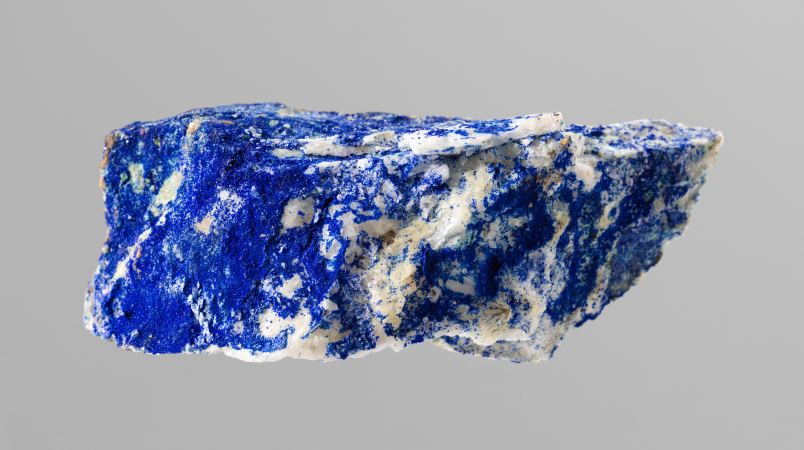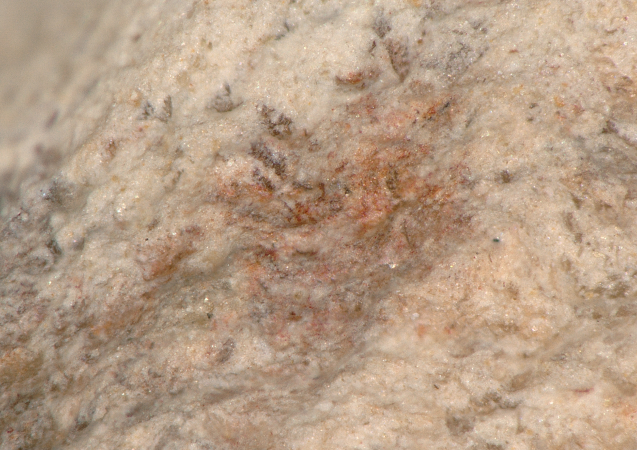Overview
This imposing Cycladic figure was once brightly colored. How do we know? Today evidence of color on Cycladic sculpture often remains only as paint “ghosts” or vestiges of pigment, revealed through scientific study and analysis. Tap the buttons below to discover more.
Paint ghosts
Sometimes close examination reveals paint “ghosts” even when pigment isn’t preserved. For example, the lines of low relief defining the figure’s eyes, or the smoother area on the back of the head for hair. The original application of paint protected the stone’s surface from weathering. Ancient artists may have also repainted these features to ensure they stood out and endured while the figure was in use.
Second set of eyes
Although less well-preserved, a second set of eyes is also visible on the figure’s forehead as a “ghost” image. It may be that they were removed or allowed to fade or flake off, perhaps after a ritual or other specific event.
Mouth
Many Cycladic figures, including this one, do not have any traces of a painted mouth. This may suggest that during ritual use a human counterpart was responsible for speaking, or that the paint did not survive millennia of weathering.
Azurite
Some areas of this figure are less weathered, such as the eyes, hair, and pubic triangle. These details are thought to have been protected from erosion by a thick medium such as beeswax that would have bound a pigment like azurite, which is no longer preserved.

Cinnabar
This figure was painted red around the neck. A micrograph (photo taken with a microscope) of the neck area reveals particles of both red iron oxides and the bright red mineral pigment cinnabar. Some Cycladic figures also had red paint between the fingers and toes.

X-ray radiography
The figure’s neck and knees were broken, perhaps during ritual use in antiquity. Digitally enhanced X-ray radiography shows modern repairs with internal metal pins at the joins and inserted into the underside of the feet to hold the figure upright in a modern mount.
Ultraviolet-induced visible luminescence
When illuminated by ultraviolet light, modern materials often luminesce differently than the marble surface. In this figure, some of the repairs appear bright, while others are non-luminescent and appear dark, indicating more than one restoration material was used.
Offer Feedback
We welcome your feedback on this pilot. Please email us at The Met Feedback